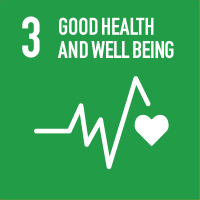Studying at the University of Verona
Here you can find information on the organisational aspects of the Programme, lecture timetables, learning activities and useful contact details for your time at the University, from enrolment to graduation.
Type D and Type F activities
This information is intended exclusively for students already enrolled in this course.If you are a new student interested in enrolling, you can find information about the course of study on the course page:
Laurea in Scienze delle attività motorie e sportive - Enrollment from 2025/2026I Regolamenti dei corsi di laurea e di laurea magistrale di scienze motorie prevedono che gli studenti possano completare il proprio piano didattico, frequentando oltre agli insegnamenti obbligatori anche delle attività formative a scelta, per approfondire alcuni aspetti tematici o settori di interesse, in coerenza con il proprio percorso formativo.
Le attività formative a scelta di ambito D sono indicate all’interno del piano didattico del corso di studio prescelto, mentre le attività formative di ambito F sono individuate da una apposita commissione di docenti. Queste ultime attività possono essere conferenze, seminari, webinar, altro e vengono acquisite con una valutazione e non con un voto in trentesimi.
Link attivo alla pagina: Regole e Tabelle delle attività a scelta
COMPETENZE TRASVERSALI
| years | Modules | TAF | Teacher |
|---|---|---|---|
| 2° 3° | Hygiene applied to physical activities | D |
Ilaria Tocco Tussardi
(Coordinator)
|
| 2° 3° | Statistics applied to movement sciences | D |
Maria Elisabetta Zanolin
(Coordinator)
|
Theory and pedagogy of fitness (2024/2025)
Teaching code
4S001091
Teacher
Coordinator
Credits
3
Language
Italian
Scientific Disciplinary Sector (SSD)
M-EDF/02 - SPORT SCIENCES AND METHODOLOGY
Period
2° semestre triennio dal Mar 3, 2025 al Jun 6, 2025.
Courses Single
Authorized with reserve
Learning objectives
Acquisition of basic teaching and methodological skills of the main and most popular music fitness activities present in the fitness scene. Students will know the role of music fitness in its various forms within motor activities aimed at maintaining a good state of health and well-being. They will be able to direct simple lessons using the instructor-specific conducting techniques and basic teaching techniques.
Prerequisites and basic notions
Knowledge of the basic movements of the fitness group courses and sufficient executive ability
Program
Role in promoting the health of resistance, strength training (ACSM prescriptions); acute and chronic effects.
Music role and musical structure, basic cueing.
The main stages of a lesson:
Warm up: role and function. Different modes. Warm up phases. Basic bodyweight steps: correct execution, potentially dangerous exercises. Initial stretching. Use of music and specific cueing.
The central phase (work out): different methodologies and techniques based on the physiological / morphological / functional objectives of the course analyzed.
- Free body sequences and with the step tool. Simple teaching methodologies
Basic exercises for muscle conditioning in the main body areas with free body and with specific and non-specific, so-called "makeshift" tools of the fitness group.
Movement terminology and knowledge of the biomechanical action of the main muscle areas.
Use of music in muscle conditioning and cueing.
Forms of monitoring the intensity of the exercise.
Cool down and stretching
Training in joint mobility and motor control in collective fitness.
The professionalism of the instructor and techniques will communicate you.
Didactic methods
The teaching activity will be carried out both face-to-face, in particular when inherent in the acquisition of theoretical knowledge, and in an exercise and laboratory mode when the activities will be aimed at the students' acquisition of practical skills and abilities.
Learning assessment procedures
Written test with multiple choice and open questions.
Carrying out and conducting parts of the lesson agreed with the teacher on the basis of the program actually carried out.
Evaluation criteria
written test, maximum score 10
practical management: correct executive technique, correct use of cueing, correct respect for the master beat. (maximum score 20)
Criteria for the composition of the final grade
FINAL SUMMATIVE EVALUATION composed of the sum of evaluation 1+ evaluation 2+ evaluation 3.
Evaluation 1 = Practical + descriptive: maximum score = 20
Evaluation 2= Written test with multiple and open answers: maximum score =10
Evaluation 3= Exercises/tasks/assignments/participation: honors and +2
Maximum final mark = 30 cum laude
TO PASS THE EXAM IT IS COMPULSORY TO ACHIEVE THE FOLLOWING EVALUATIONS:
PRACTICE=12/20 WRITTEN =6/10
minimum grade=18
Exam language
italiano

